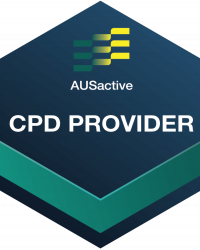Mat Repertoire
Abdominal Work:
Teaser
Alternate Names
Teaser III
Derived From
Classical Mat Work: The Teaser
Primary Element
Strength
Why for Primary?
To develop strength and control in thoracic flexion and the deep abdominal muscles transversus abdominis with the challenge of the higher lift of the torso and legs.
Secondary Element
Stability
Why for Secondary?
To develop control in the deep abdominal muscles transversus abdominis to create pelvis and torso stability.
Tertiary Element
N/A
Why Tertiary?
N/A
Repetitions
4-6
Plane of Motion
Sagittal
Targeted Muscles
For torso flexion, the targeted muscles are rectus abdominis or the ‘six-pack’ muscles at the front of the torso to overcome gravity and curl the torso forwards and upwards.
To create pelvis stability and balance the weight of the legs the targeted muscles are the deep abdominal muscles transversus abdominis.
To extend the legs and lift them up and forwards of the torso the hip flexor muscles are used including:
- Psoas
- Iliacus
- Rectus femoris
Warnings
This exercise may be unsuitable for clients where torso flexion or engagement of the abdominals is contraindicated.
Execution
Lie supine on the Mat with the legs extended straight out, arms reaching upwards above the shoulders to a vertical position with the palms facing inwards. Inhale to circle the arms around and upwards floating the head and shoulders, then exhale to lift the torso higher before lifting the legs up to balance on the base of the sacrum with the torso and thighs forming a ‘V’ shape.
Inhale to hold the position at the top, exhale to tilt the pelvis back and roll the spine back to supine whilst lowering the legs. The aim is for the head and feet to touch the Mat at the same time on the return.
Observations
Do a body scan of the client taking note of the following points
- Head and Neck
- Is the back of the neck long and crease-free? A slight retraction of the neck with the chin tucked can help avoid straining the neck
- Pelvis
- Is the pelvis still throughout or is the torso rocking throughout the movement?
- Is the client able to keep a slight posterior pelvic tilt throughout, and avoid arching into their lumbar spine, particularly as the legs lift?
- Arms
- Are the arms assisting with the lift of the torso?
- Are the aims assisting with balance at the top? Or creating a challenge (for example my circling the arms)
- Legs
- Are the legs lifting upwards after the abdominals are engaged and the torso has started to lift?
- Are the legs adducted?
Learning Style Technique Cues
Auditory – word associations that connect mind and body
- Aim for sequential movement of the spine as the torso lifts and lowers
- Sweep the arms around and upwards to assist with the torso lifting
- Say the client’s name when you’re about to interact with them
Visual
- Imagine lifting upwards like Abdominal Work: The Hundred – Double Leg Stretch but lifting higher
- You may demonstrate a part of the movement as a visual representation for the client to see, for example with the arms moving like the legs
Kinaesthetic
- Avoid arching the spine when the legs lift
- Reconnect into the transversus abdominais just before the legs lift and lower
Modifications and Variations
Regress the exercise by
- Keeping the knees bent with the legs in a tabletop position and working on lifting and lowering the torso with the legs still (sometimes known as Teaser Preparation)
- Working on Abdominal Work: Roll Back
- Working on Spinal Mobility: Roll Up
- Reducing the pace of the repetitions
Progress the exercise by
- Aiming to reach the arms back further, and lift the torso on a higher angle creating a V position
- Pausing at the top in the ‘V’ shape position and circling the arms around five times in each direction before lowering back to the Mat
- Removing the assistance of the arms and holding a Magic Circle or Pilates ring, or a Pilates ball the whole time so the arms are lifting upwards
- Holding a Magic Circle or Pilates ring, or a Pilates ball between the ankles
- Increasing the pace of the repetitions
Classical Teaser variations?
- Teaser I – after the initial lift of the torso and legs, leave the legs lifted and lift and lower the torso only with the arms reaching overhead as the head comes back to the Mat
- Teaser II – after the initial lift of the torso and legs, keep the upper body still and lift and lower the legs. Avoid leaning the torso back as the legs lower
- Teaser III – similar to this exercise, but with the arms reaching back and overhead on the return to the Mat
- Teaser IV – is sometimes known as Abdominal Work: Hip Twist
Series and Transitions
This exercise is part of the Abdominal Work series which includes a range of other exercises in the fundamental and progressive repertoire. The Abdominal Work series can also be found in the Reformer and Cadillac repertoire.
The traditional order of the Abdominal Work series is
- Single Leg Stretch
- Double Leg Stretch
- Hamstring Pull or Single Straight Leg Stretch
- Double Leg Lower (not included in the Inspired Academy repertoire, however a similar exercise can be found in the Reformer Feet in Straps: Double Leg Lowers)
- Criss Cross
Inspired Academy follows the order to create stability and mobility before building strength.
Warm Up repertoire
Fundamental repertoire
Progressive repertoire

